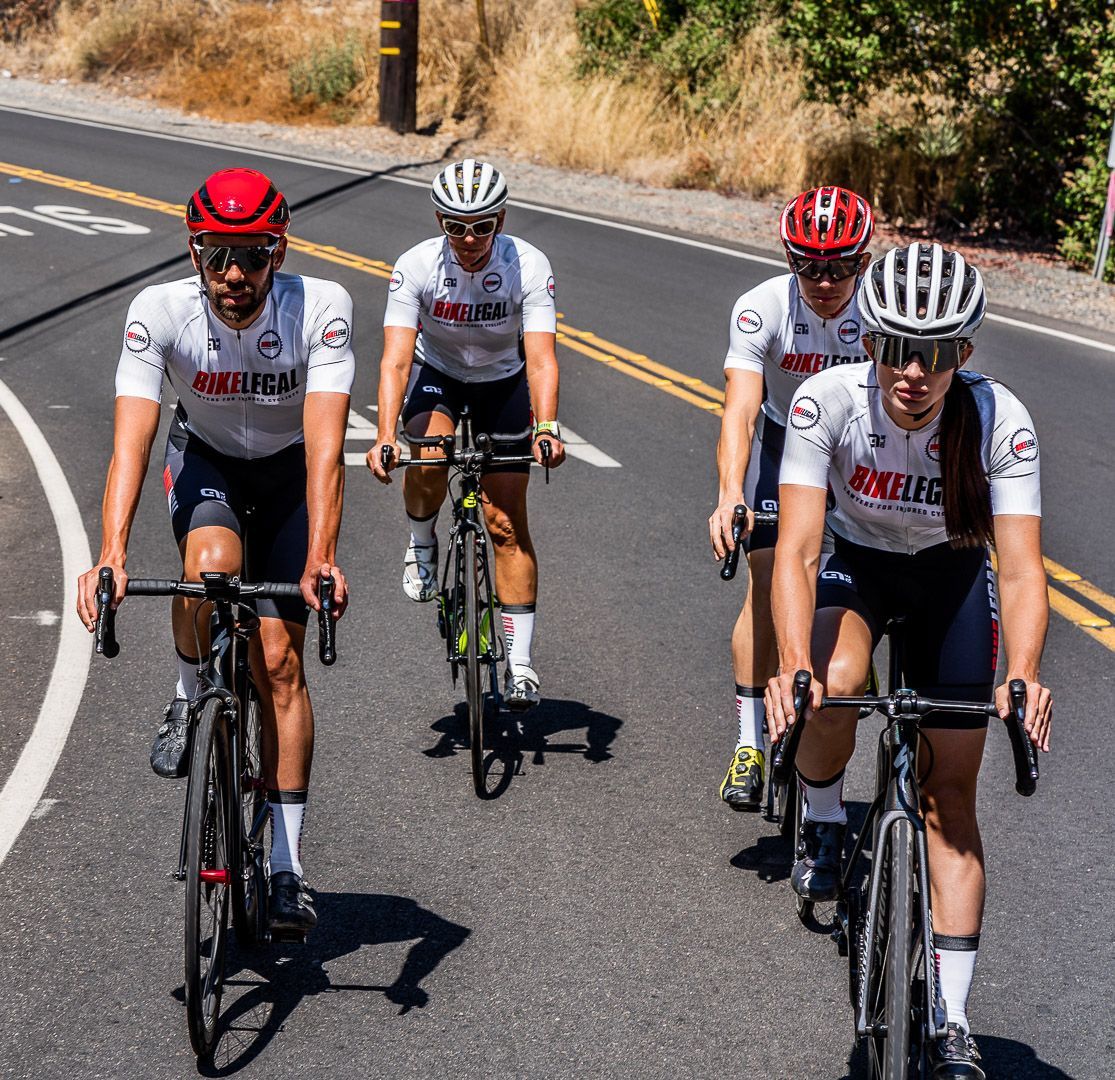RAGBRAI 2025 Guide: Route, Rider Essentials, and Training Tips
Follow us on
social media!
The Register's Annual Great Bicycle Ride Across Iowa (RAGBRAI) is the world’s oldest, largest, and longest recreational bicycle touring event in the world. Each July, thousands of cyclists gather at Iowa’s western border for a week-long cycling tour across the state's scenic roads, small towns, and welcoming communities.
Whether you're a first-time rider or returning veteran,
this comprehensive RAGBRAI 2025 guide will help you prepare for an unforgettable ride across Iowa’s rolling terrain. From training tips and route details to gear checklists and safety advice, everything you need is right here.
Table Of Contents
What is RAGBRAI? History and Significance
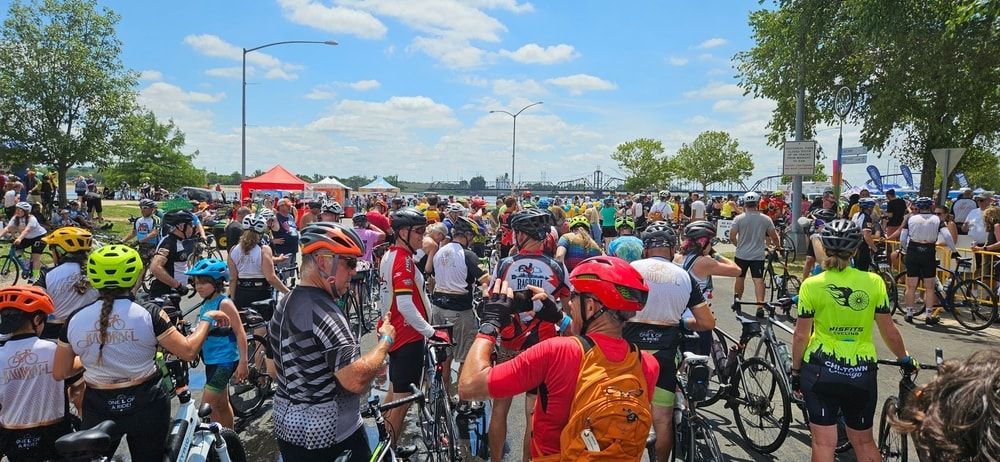
RAGBRAI stands for Register's Annual Great Bicycle Ride Across Iowa, a seven-day cycling event that spans the entire state of Iowa from west to east.
Founded in 1973 by Des Moines Register colleagues John Karras and Donald Kaul, it has grown from 300 initial riders to become the world's largest recreational bicycle touring event, attracting thousands of participants from all 50 states and internationally.
The Origin Story
What began as a casual challenge between two newspaper columnists has evolved into an iconic cycling tradition. In 1973, Des Moines Register journalists John Karras and Donald Kaul decided to ride their bicycles across Iowa and write about their experiences. They invited readers to join them, expecting perhaps a few dozen people to show up.
To their surprise, around 300 cyclists gathered for that first ride. Among them was Clarence Pickard, an 83-year-old Indianola resident who became an instant legend. Despite his age, Pickard completed the entire journey to Davenport on a used ladies' Schwinn bicycle. Even more impressively, he tackled a grueling 110-mile stretch from Des Moines to Williamsburg while wearing woolen long underwear, and his signature silver pith helmet.
RAGBRAI By the Numbers
The growth of RAGBRAI over five decades tells a remarkable story:
- Total participants: Over 474,103 riders have participated since the event's inception
- Total miles covered: 23,247 miles covered by routes between 1973-2024
- Largest Daily Rider Count: 50,000 in 2023 on RAGBRAI L when riders rode from Ames to Des Moines
- Participation demographics: Riders from all 50 states and numerous foreign countries join each year
What started as a modest newspaper promotion has become a cultural institution and economic engine for Iowa's small towns, generating tourism revenue and showcasing the state's hospitality to the world.
RAGBRAI 2025 Route Map and Details
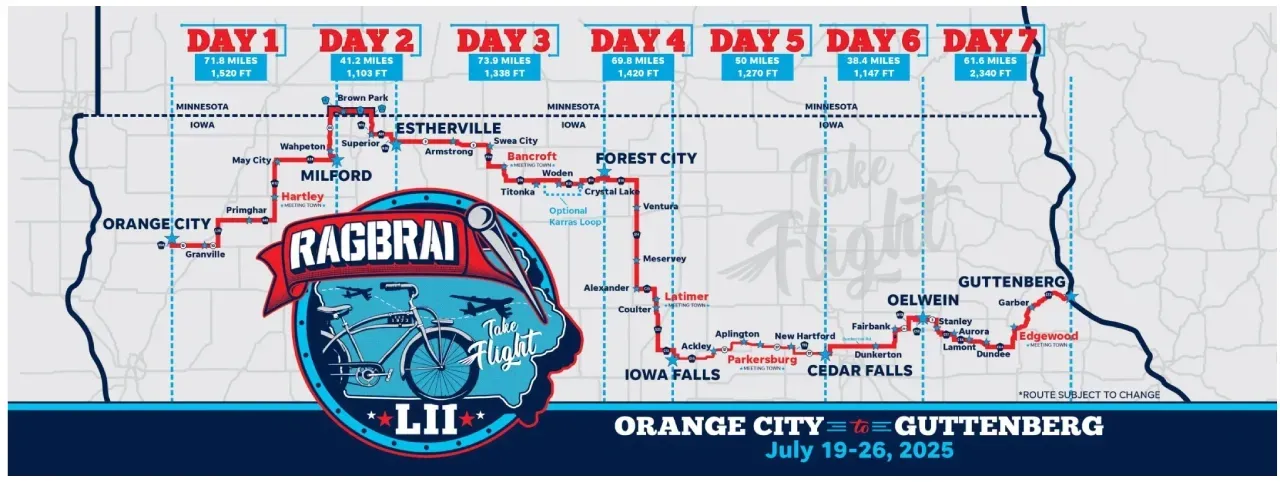
The 2025 RAGBRAI route (LII) spans from west to east across Iowa, covering approximately 406.7 miles with a total elevation gain of 10,138 feet over seven days.
RAGBRAI 2025 Daily Route and Elevation breakdown
- Day 0 (July 19, 2025): Expo in Orange City
- Day 1 (July 20, 2025): 71.8 miles, 1,520 ft elevation gain, ending in Milford
- Day 2 (July 21, 2025): 41.2 miles, 1,103 ft elevation gain, ending in Estherville
- Day 3 (July 22, 2025): 73.9 miles, 1,338 ft elevation gain, ending in Forest City
- Day 4 (July 23, 2025): 69.8 miles, 1,420 ft elevation gain, ending in Iowa Falls
- Day 5 (July 24, 2025): 50 miles, 1,270 ft elevation gain, ending in Cedar Falls
- Day 6 (July 25, 2025): 38.4 miles, 1,147 ft elevation gain, ending in Oelwein
- Day 7 (July 26, 2025): 61.6 miles, 2,340 ft elevation gain, ending in Guttenberg
This carefully designed route showcases Iowa's diverse landscapes, from the western plains to the Mississippi River bluffs, with a mix of challenging and recovery days to keep riders fresh throughout the week.
Host Towns and Attractions
Each overnight town along the RAGBRAI route offers a unique experience for riders:
- Orange City: Known for its Dutch heritage, Orange City welcomes riders with tulip gardens, Dutch architecture, and the pre-ride expo.
- Milford: Located near the Iowa Great Lakes, Milford provides beautiful water views and outdoor recreation opportunities.
- Estherville: This northern Iowa town offers charming main street shops and local cuisine.
- Forest City: Home to Winnebago Industries, Forest City celebrates its manufacturing heritage alongside natural attractions.
- Iowa Falls: The scenic Iowa River runs through this picturesque town, known as the "Scenic City."
- Cedar Falls: Home to the University of Northern Iowa, Cedar Falls offers vibrant nightlife, cultural events, and extensive trail systems.
- Oelwein: This northeastern Iowa community showcases its railroad history and small-town hospitality.
- Guttenberg: The final destination sits on the Mississippi River, where riders participate in the traditional tire dipping ceremony to mark completion of their journey.
Each host community organizes entertainment, food vendors, and activities to welcome thousands of hungry, tired, and celebratory cyclists each evening.
RAGBRAI 2025 Registration and Participation Options
The RAGBRAI registration process offers flexibility for different participation levels:
Registration Dates and Timeline:
Registration for RAGBRAI LII is tiered, with early registration opening November 15, 2024, and prices increasing through May 31, 2025. On-site registration is available in Orange City on July 19, 2025.
Full-Week vs. Daily Participation Options:
- Full-week registration: Ranges from $230 (early registration) to $350 (late/onsite)
- Day passes: Range from $45-$70 (depending on when you register) per day, allowing riders to participate on specific days
Support Vehicles (Team SAG Cars):
Non-riders traveling with cyclists and providing support must register separately ($45-$50) and follow designated support vehicle routes.
Camping Arrangements:
Participants have access to designated camping areas in each host town, featuring amenities such as baggage transport, food vendors, shower facilities, and shuttle services.
Note: Online registration for RAGBRAI LII is currently closed. However, they will accept on-site registrations in Orange City on Saturday, July 19th, from 12-9.
RAGBRAI Traditions
RAGBRAI has developed rich traditions over its five-decade history:
- The dipping of tires: Riders ceremonially dip their rear wheels in the Missouri River at the start and their front wheels in the Mississippi River at the finish, symbolizing the complete crossing of Iowa.
- Team formations: Many participants ride as part of organized teams, often with creative names, matching jerseys, and decorated support vehicles. These teams foster camaraderie and provide mutual support throughout the week.
- Themed days and costume traditions: Many riders embrace daily themes or team costumes, adding color and festivity to the ride.
The Dream Team: Empowering Youth Through Cycling
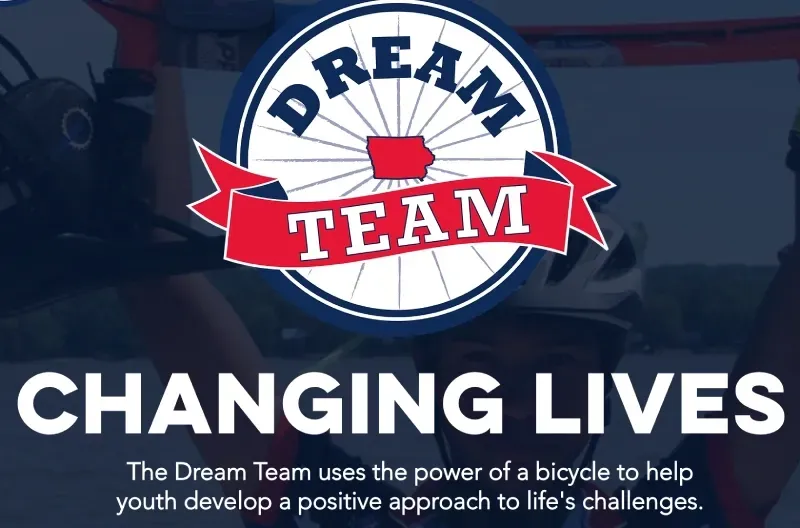
One of RAGBRAI’s most inspiring traditions is the Dream Team, a nonprofit program based in Des Moines that empowers youth through long-distance cycling. Founded in 1996, the Dream Team pairs teens with adult mentors who guide them through a year-round program focused on setting goals, building confidence, and completing RAGBRAI.
Participants train together for months leading up to the event, learning not only cycling skills, but also teamwork, perseverance, and leadership. For many riders, finishing RAGBRAI represents more than a physical achievement, it’s a life-changing milestone.
The Dream Team provides bikes, gear, training, and support to participants, relying on donations and community volunteers to make the program possible.
➡️
Want to support the Dream Team?
You can get involved by volunteering, donating, or simply cheering them on along the route. Learn more at
Support Dream Team.
These traditions contribute to RAGBRAI's unique culture and community spirit, making it much more than just a bicycle ride.
Where to Sleep During RAGBRAI 2025: Overnight Accommodations
Each host town along the RAGBRAI route offers designated camping areas for registered riders, usually located at schools, parks, or fairgrounds. These sites are equipped with basic amenities such as portable restrooms, showers, water stations, food vendors, and gear trucks for baggage drop-off and pick-up.
Types of Overnight Options:
- Tent Camping (most common): Bring your own tent and sleeping gear. Many participants set up their own camps, while others utilize charter services that provide tent setup, luggage transport, and additional amenities.
- Charter Services: These third-party services offer premium packages including tent setup/take-down, air mattresses, charging stations, private showers, and lounge tents. Ideal for riders seeking enhanced comfort and convenience.
- RV and Vehicle Camping: Available in limited quantities. Support drivers must follow RAGBRAI’s official vehicle route and park in designated areas only.
- Local Hosts: Some residents in host towns open up their homes, backyards, or driveways to riders. You can coordinate through town message boards, social media, or RAGBRAI’s housing request forms.
- Hotels or Motels: Limited in small towns and often booked months in advance. If you’re considering this option, reserve early and expect longer distances from the campground or route.
Regardless of where you sleep, earplugs, a sleep mask, and a comfortable sleeping pad can make a significant difference in the quality of your rest after long days on the bike.
Is the RAGBRAI Route Open to Vehicle Traffic?
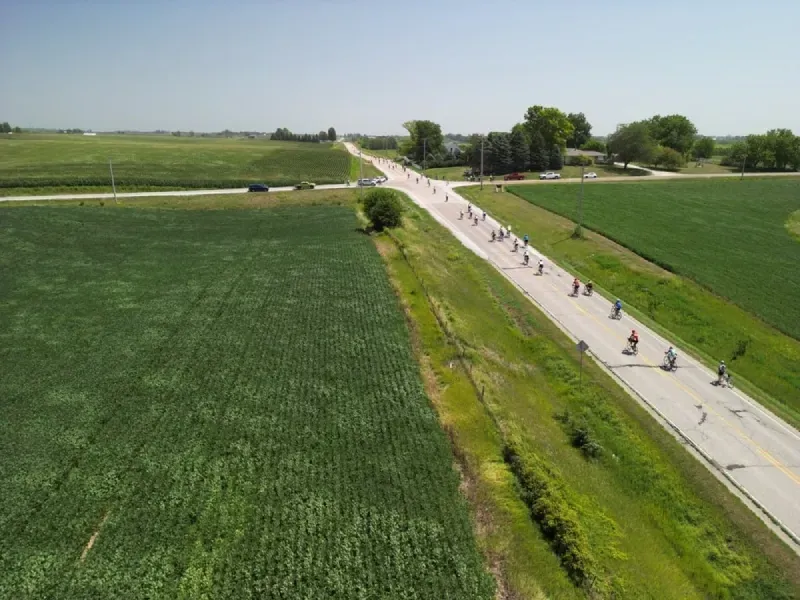
While RAGBRAI takes place on public roads, the route is primarily reserved for bicycle traffic during the event. To protect riders and manage the flow of thousands of cyclists, general vehicle traffic is restricted on many parts of the course.
To keep riders safe:
- Support vehicles must register and display a vehicle pass.
- Designated vehicle routes guide support drivers around the main route to reduce congestion.
- Street closures and intersection controls are common to protect cyclists.
- Non-riders must also register and wear wristbands to access campgrounds and services.
Drivers who are part of support teams must follow official RAGBRAI detour maps and instructions at all times.
Even with traffic restrictions, there may be times when you’re sharing the road with vehicles. If a crash happens, Bike Legal’s Iowa Bicycle Accident Attorney is here to help. We’re cyclists too, and we fight to protect injured riders.
Bike Legal’s #1 Safety Tip for Cyclists
If there’s one thing we wish every cyclist and driver knew before a crash, it’s this:
Your auto insurance matters. Specifically,
Uninsured/Underinsured Motorist (UM/UIM) coverage can be a financial lifesaver if you're hit by a driver with little or no insurance.
Even though you’re on a bike, your own auto policy can protect you in a crash. Yet most people don’t realize it, or find out too late. We call this your “bicycle armor.” It's the best protection you can carry besides your helmet.
RAGBRAI's RIDE RIGHT Safety Program
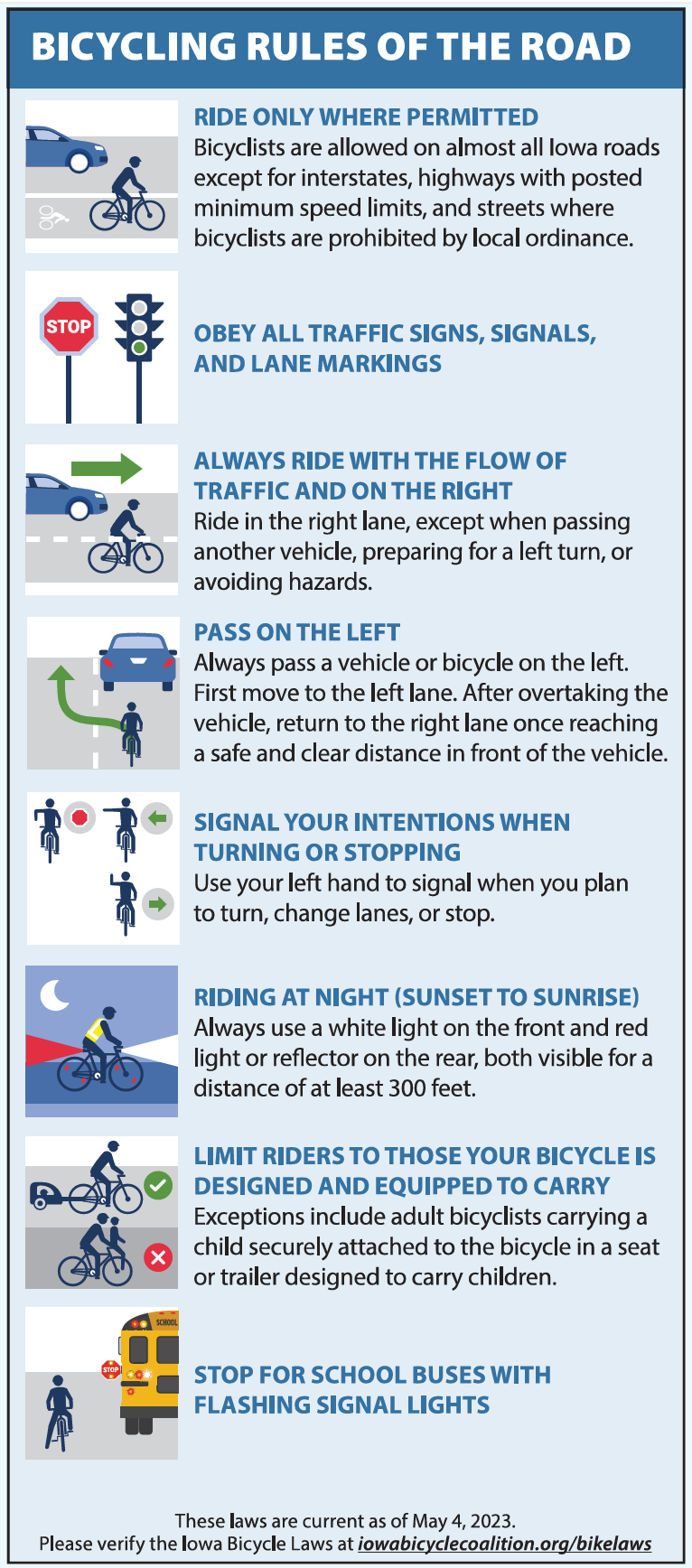
RAGBRAI's official RIDE RIGHT safety program is a comprehensive approach to cyclist safety. This program acknowledges that while understanding traffic laws is crucial, further guidance is necessary to ensure a safe and enjoyable cycling experience.
Equipment and Maintenance
Your equipment plays a crucial role in your safety during RAGBRAI. The RIDE RIGHT program emphasizes:
- Bicycle maintenance: Keep your bicycle in good repair, with special attention to your brakes. A well-maintained bike reduces the risk of mechanical failures that could lead to accidents.
Safety Gear Essentials for RAGBRAI 2025
Proper gear can significantly reduce injury risk:
- Certified Bicycle helmet: A staggering 85% of bicycling accidents result in injury to the face or head. Wearing a certified bicycle helmet is your best defense against serious head injuries.
- Visibility clothing: Wear bright-colored clothing during the day to increase your visibility to other riders and vehicles.
- Night riding equipment: If you must ride at night (though RAGBRAI recommends against it), wear light-colored and reflective clothing and use both a bright headlight and taillight. Learn more about bicycle lighting in our article Bicycle Light Lumens Guide: How Bright Should Your Lights Be
Communication on the Road
Clear communication prevents accidents and improves the group riding experience:
- Signal your intentions: Always use hand signals for turns and stops; it's not just the law, it actively prevents accidents.
- Verbal warnings: When passing other cyclists, clearly announce "on your left," to prevent startled reactions and potential crashes.
Riding Techniques and Etiquette
Your position and behavior on the bike play a major role in ensuring safety, not just for yourself, but for those around you. Practicing proper bicycle etiquette helps create a safer and more predictable ride. It also signals to others that you're a reliable and experienced wheel to follow.
- Proper stopping: When stopping, signal and vocalize your intentions, then move safely to the shoulder.
- Maintain a straight line: Ride predictably by avoiding weaving, which makes your movements unpredictable to others.
- Avoid risky drafting: Don't draft in unpredictable crowds or behind vehicles; it's dangerous in situations where sudden stops may occur.
- Stay right: Ride to the right to allow others to pass safely on your left.
Mindset and Attitude
- Stay alert and aware of your surroundings at all times.
- Remember it's not a race—RAGBRAI is about enjoying the journey.
- Never drink alcohol and ride—it impairs judgment, balance, and reaction time.
- Be considerate and predictable to fellow cyclists and motorists.
- Ride single file when appropriate, rather than several abreast.
- Follow official instructions from RAGBRAI staff, state troopers, and law enforcement.
- Stay on the marked route—services aren't available if you venture off-course.
- Follow directions from RAGBRAI officials, state troopers, and other law enforcement personnel at intersections.
Railroad Crossing Safety
RAGBRAI routes cross numerous railroad tracks, requiring special attention:
- Cross at 90-degree angles: Narrow bicycle wheels can get caught between rails. If possible, walk—don't ride—across tracks.
- Use designated crossings only: The only legal and safe places to cross are at designated public crossings with crossbucks, flashing lights, or gates.
- Be cautious on wet tracks: Dismount and walk your bike across slippery tracks, stepping over—not on—them.
- Watch for second trains: After one train passes, wait until you can see clearly in both directions.
- Respect warning signals: If you see flashing lights or lowering gates, wait until they deactivate entirely before proceeding.
RAGBRAI'S SAG & Medical Support Services
RAGBRAI ensures that riders have access to both medical and SAG support services throughout the event. Whether you're dealing with a minor mechanical issue or require urgent medical assistance, RAGBRAI provides dedicated support teams along the route to ensure you're well taken care of.
SAG Support Services
The SAG (Support and Gear) service provides critical assistance:
- Emergency use only: SAG is available only to registered riders who can't continue due to medical or mechanical issues, not for daily convenience.
- Transport services: SAG Wagons will take you and your bike to either a repair station or the next overnight town's main campground.
- Not for emergencies: For true emergencies, call 911—SAG Wagons are not emergency services.
- How to signal for help:
- Turn your bike upside down ("wheels up") on the left side of the road
- Give the SAG driver a "thumbs down" signal
- In towns, check the fire station or first aid station for SAG services
- Be patient—SAG Wagons make loops and must reach full capacity before departing
Medical Support
RAGBRAI provides comprehensive medical assistance:
- CARE Ambulance teams: Medical professionals, including paramedics and doctors, patrol the bicycle route.
- Campground services: Emergency medical treatment is available in each overnight location.
- Daily coverage: Four ambulances and two motorcycle first-responders patrol the route during official hours.
Training Tips for RAGBRAI 2025 Riders
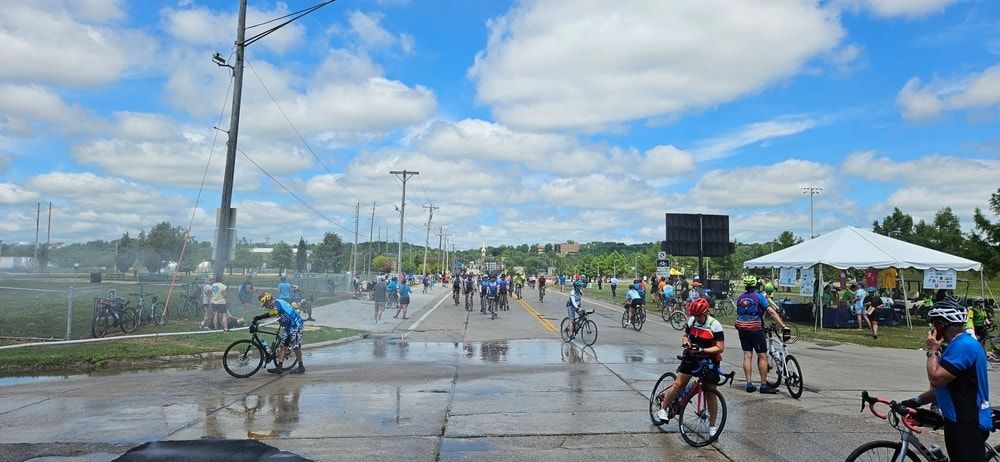
Preparing your body for seven consecutive days of riding requires dedication and a structured approach:
- Training recommendations: Begin training 3-9 months before the event, gradually increasing your weekly mileage. Aim to complete at least 2-3 rides per week that's 50-75% of your longest RAGBRAI day. Know your fitness level and create a training plan that suits your schedule and goals.
- Building endurance for consecutive days: Incorporate back-to-back training rides on weekends to condition your body for multiple days of cycling. Complete several weekends with long rides on both Saturday and Sunday.
- Nutrition and hydration strategies:
* During training: Experiment with different foods and hydration products to find what works for your body. Don't try new things during the event.
* During RAGBRAI: Start each day well-hydrated, refuel regularly at rest stops, and replenish electrolytes, especially on hot days. - Weather preparation: Train in various conditions to prepare for Iowa's July climate, which can include heat, humidity, rain, and wind. Develop strategies for each scenario, such as proper clothing layers and hydration plans.
Want to learn more about training for cycling events? Read our in-depth guide: How to become a Faster Cyclist- Pro Tips to Build Speed and Endurance.
Essential Gear and Preparation for RAGBRAI 2025
Choosing your gear and packing appropriately for RAGBRAI can make the difference between a positively unforgettable experience and a negative one.
Choosing Your Bike:
Road bikes are popular for their speed and efficiency, but comfortable endurance or touring bikes often provide better stability and comfort over long distances.
Professional Tune-up:
Schedule a comprehensive tune-up 2-3 weeks before RAGBRAI, allowing time to test any adjustments. Ensure your bike shop checks:
- Drivetrain and shifting
- Brake system
- Wheel trueness and spoke tension
- Bearing systems (bottom bracket, headset, hubs)
- Tire condition and appropriate pressure range
Spare Parts:
Carry multiple spare tubes that match your tire size, tire levers, a multi-tool with a chain breaker, and a high-quality frame pump or CO2 inflator system.
Invest in a Professional Bike Fit:
Riding a bike that hasn’t been correctly fitted to your body can lead to common overuse injuries like saddle sores, cyclist’s palsy, and chronic neck or back pain. A week of long days in the saddle is no time to discover you're in the wrong position. To avoid discomfort and prevent injury, invest in a professional bike fit.
Bicycle Helmet:
A properly fitted, CPSC-certified bicycle helmet is non-negotiable. Consider models with enhanced ventilation and MIPS (Multi-directional Impact Protection System) technology for improved protection.
Cycling Apparel:
- high-quality padded cycling shorts or bibs. Bring enough for each ride day, or be prepared to wash before wearing again.
- 3-4 moisture-wicking jerseys with rear pockets
- Lightweight, packable rain jacket
- lightweight cycling vest
- Arm and leg warmers for morning chill
- Cycling gloves to protect your hands and for a better grip
- Cycling-specific socks (moisture-wicking, seamless toes)
Sun Protection:
- UVA/UVB-blocking sunglasses
- Sweat-resistant, high-SPF sunscreen
- Lip balm with SPF protection
- Cycling cap or bandana for under-helmet sun protection
Lights and Visibility Gear:
- Front white light (100+ lumens)
- Bright Rear red blinking light
- Reflective elements on clothing or accessories
Personal Items:
- Chamois cream to prevent saddle sores
- Portable first aid kit with bandages, antiseptic wipes, and pain relievers
- Electrolyte tablets or powder
- Handlebar bag or top tube bag for quick access to items
- Road ID or identification bracelet with emergency contacts
For further safety tips and gear recommendations, check out our guide, 16 Best Bicycle Safety Accessories and Technology for Safer Rides.
RAGBRAI Weather Challenges
Iowa's July climate presents several challenges for cyclists:
- Iowa's typical July climate conditions:
Expect temperatures in the 80s-90s°F with high humidity. Morning fog and afternoon thunderstorms are possible, and wind can be a significant factor.
- Strategies for riding in heat, rain, or wind:
- Heat: Start early, hydrate constantly, use cooling towels, and take breaks in shaded areas
- Rain: Pack lightweight rain gear, use fenders if possible, and reduce speed on wet roads
- Wind: Form pacelines with other riders to share the work, adjust your position on the bike, and maintain a steady cadence
- Severe weather protocols on RAGBRAI:
RAGBRAI officials monitor weather conditions and will alert riders in the event of severe storms. Designated shelters are available, and parts of the route may be modified or canceled for safety. Always follow official instructions during weather emergencies.
For more tips on cycling in heat and rain, read our articles:
Mistakes to Avoid at RAGBRAI
First-time RAGBRAI participants often make these common mistakes:
- Packing too much gear:
Veterans recommend bringing only essentials, as everything must be carried or transported on a daily basis. Focus on versatile items and remember that most necessities are available in host towns.
- Starting too fast on day one:
The excitement of beginning RAGBRAI leads many riders to push too hard on the first day. Pace yourself, it's a weeklong event, not a race.
- Neglecting proper hydration and sunscreen:
The Iowa summer sun can be intense, and dehydration happens quickly. Drink before you're thirsty and reapply sunscreen regularly.
- Missing out on small-town experiences:
Some riders focus so much on completing the daily mileage that they rush through towns without experiencing local culture and hospitality, which is a significant part of what makes RAGBRAI special.
Recovery Tips After RAGBRAI 2025
After a week of consecutive long rides, your body will need proper recovery:
- Post-ride stretching and recovery techniques:
Gentle stretching immediately after finishing helps prevent muscle tightness. Focus on the quadriceps, hamstrings, calves, and lower back.
- Nutrition for recovery after a week-long ride:
Replenish with protein-rich foods to repair muscles and complex carbohydrates to restore energy. Stay hydrated and consider recovery drinks with protein and electrolytes.
- Addressing common physical issues:
- Saddle sores: Keep the area clean and dry, apply anti-chafing cream, and give yourself time off the bike
- Muscle fatigue: Alternate between light activity and rest, consider gentle massage or foam rolling
- Sunburn: Apply aloe vera and moisturizer, stay hydrated, and protect affected areas from further sun exposure
- When to seek medical attention for persistent problems:
If pain persists more than a few days, if you experience severe swelling or limited mobility, or if you develop signs of infection, consult a healthcare provider.
For further guidance on recovery from overuse injuries, read our guide on bike injury treatment.
Ready to Ride Across Iowa?
RAGBRAI represents more than just a bicycle ride across Iowa; it's a celebration of cycling culture, community spirit, and personal achievement. From the ceremonial tire dip in the Missouri River to the triumphant finish at the Mississippi, every mile offers new experiences and memories.
Whether you're drawn to the physical challenge, the small-town hospitality, or the camaraderie of thousands of fellow cyclists, RAGBRAI delivers an experience unlike any other cycling event in the world. With proper preparation, respect for safety guidelines, and a sense of adventure, you'll discover why so many riders return year after year to pedal across America's heartland.
Ride Protected. Ride Safe, with Bike Legal Bicycle Accident Attorney

At Bike Legal, we applaud the organizers of RAGBRAI for putting cyclist safety first by restricting vehicle access along the route. It’s the kind of thoughtful planning that makes events like this both safe and memorable.
But we also know that training for a ride like RAGBRAI means sharing the road with traffic, and unfortunately, not all drivers respect a cyclist’s right to be there. When bicycle crashes happen, they’re often the result of driver negligence.
If the unthinkable occurs and you need a bicycle accident lawyer, Bike Legal is here to help. We are cyclists ourselves, and we specialize in representing injured riders across the country. Our legal team is dedicated to protecting your rights and securing the maximum compensation you deserve for your injuries, medical bills, and damaged bike and gear.
📞 Call 877-BIKE LEGAL (877-245-3534) for a free consultation. Let us fight for your recovery—so you can get back to doing what you love.
Frequently Asked Questions About RAGBRAI 2025
What does RAGBRAI stand for?
RAGBRAI stands for the Register’s Annual Great Bicycle Ride Across Iowa.
How long is RAGBRAI?
RAGBRAI 2025 is a 7-day ride across Iowa, covering approximately 406.7 miles in 2025.
Do I need to register to ride?
Yes, all riders must register to receive a wristband, baggage tags, and access to support services. On-site registration is available in Orange City on July 19, 2025.
Where do riders sleep during RAGBRAI?
Most riders camp in designated areas in each host town. Options also include charter tents, RVs, local hosts, and hotels (where available).
Do I need to bring my own food?
No. Food vendors line the route and host towns offer meals, snacks, and hydration. Many small-town groups use RAGBRAI as a fundraiser, so meals often support local organizations.
Is there SAG support if I can’t finish a day?
Yes, Support and Gear (SAG) wagons are available to help riders who are unable to finish due to medical or mechanical issues.
How should I train for RAGBRAI?
Start training 3–9 months before the event. Build up to back-to-back long rides and train in various weather conditions.
What’s the best way to avoid injuries during RAGBRAI?
Get your bike professionally fitted to your body to prevent common issues like saddle sores and back pain. Read our Bike Fit Guide for expert tips.

